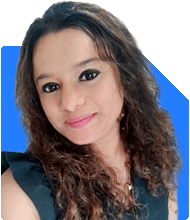Hello Sir,
I am 48 years old.. want to get 2 cr by investing monthly 50000 to 60000
please advise how should i invest to get 2 cr in next 5 years.
Ans: At 48 years old, you are at a critical phase of wealth creation. You want to reach a target of Rs 2 crore by investing Rs 50,000 to Rs 60,000 monthly over the next five years. Achieving this goal requires a disciplined, well-structured approach and smart investment decisions. Here's how you can get there:
Assessing Your Financial Goals
Investment Horizon: You have a relatively short investment horizon of five years. This means that you need a blend of high-growth investments with a certain degree of safety as you approach the target.
Risk Appetite: Since you are nearing retirement, your ability to take risks may not be as high. However, to achieve Rs 2 crore in five years, you will need to consider moderately aggressive options.
Investment Flexibility: With a monthly commitment of Rs 50,000 to Rs 60,000, you have the flexibility to diversify your portfolio effectively.
Investment Strategy
Diversified Portfolio:
A balanced portfolio between equity and debt is necessary for your goal. Investing entirely in equities may offer higher returns but comes with higher risks, especially in the short term. On the other hand, debt-oriented investments offer stability but may not generate the required returns.
Equity Allocation: Given your time frame, allocate around 60% to 70% of your monthly investments into equity mutual funds. Actively managed funds are better in this scenario than index funds. Active funds provide opportunities for fund managers to outperform benchmarks, while index funds simply replicate the market performance, which may not be sufficient to meet your high return target.
Disadvantages of Index Funds: Index funds tend to underperform in volatile markets because they lack the flexibility to adapt. A Certified Financial Planner can guide you toward actively managed funds, which can better suit your five-year horizon. Moreover, active funds may help mitigate the impact of downturns due to professional management and sector rotation.
Debt Allocation: Allocate 30% to 40% of your portfolio to debt mutual funds. Debt investments provide stability and balance your portfolio’s risk. Debt funds can protect you from market volatility as you approach the end of your investment horizon.
Systematic Investment Plan (SIP):
Investing monthly through SIPs in mutual funds is ideal for your needs. It provides a disciplined way of investing and helps in rupee cost averaging, which reduces the impact of market fluctuations over time.
SIP in Equity Mutual Funds: You should focus on diversified equity mutual funds that invest in large-cap and mid-cap stocks. These funds can offer potential growth while balancing risk.
SIP in Debt Mutual Funds: Debt funds provide more consistent returns. You can consider funds with lower interest rate sensitivity for safety. SIPs into these funds can ensure you don’t put too much at risk while still gaining moderate returns.
Review Your Existing Insurance and Policies
If you have any existing LIC or ULIP policies, review their performance. Many of these traditional plans may not offer the kind of returns you need for wealth creation. In such cases, consider surrendering these policies and reinvesting the proceeds into mutual funds with the help of a Certified Financial Planner (CFP). A CFP will guide you on how to exit these policies without losing too much and reinvest for better returns.
Tax Efficiency in Mutual Fund Investments
Given the new mutual fund capital gains taxation rules, you need to consider tax implications while planning your investments.
Equity Mutual Funds: The long-term capital gains (LTCG) tax on equity mutual funds is now applicable above Rs 1.25 lakh, and it is taxed at 12.5%. This tax can impact your returns in the long run, so proper tax planning is essential. When you sell your funds, any profits beyond Rs 1.25 lakh in a financial year will be taxed, which needs to be factored into your overall return calculation.
Debt Mutual Funds: For debt mutual funds, capital gains are taxed based on your income tax slab. If your income falls in a higher tax bracket, this could significantly impact your returns. Short-term capital gains (STCG) from debt funds are taxed as per your income tax slab, while LTCG from debt funds are also taxed based on the slab rate.
To minimise tax impact, your CFP will guide you in structuring withdrawals and optimising your tax liabilities by keeping an eye on the investment tenure and tax slabs.
Increase Your SIP Contributions Annually
As your income increases or you receive bonuses, try to increase your SIP contributions. Small increments can make a big difference in achieving your Rs 2 crore target. A step-up SIP strategy allows you to increase your investment amount every year, boosting your chances of meeting your goal within the given time frame.
Emergency Fund
Even though your goal is to build a Rs 2 crore corpus, you must not overlook building an emergency fund. Your emergency fund should cover at least six months of your living expenses. Having this buffer will ensure that you don’t need to withdraw from your long-term investments in case of unexpected events.
An emergency fund can be held in liquid mutual funds or fixed deposits. These options provide liquidity while offering moderate returns.
Contingency Planning
While you are focusing on building a significant corpus, also ensure you have adequate contingency plans in place. Since you are 48 years old, health insurance and life insurance are crucial to protect your family in case of any unexpected events. Review your existing health insurance coverage to ensure it is adequate. You may need to enhance it based on your current financial status and family needs.
Health Insurance: If you don’t have health insurance, get a robust plan that covers critical illnesses. This ensures you don’t have to dip into your savings for medical emergencies.
Life Insurance: Term insurance is the most cost-effective option for covering life risk. Ensure that the sum assured is enough to meet your family’s needs in case of your absence.
Investment Monitoring
Regularly monitor your portfolio performance. Review your investments at least once every six months. This will allow you to make adjustments if needed, especially if your investments are underperforming or if there are significant market changes.
Also, keep an eye on your goals. If there’s a shortfall or if the market environment changes, you can tweak your portfolio to get back on track. Work closely with your CFP, who can provide guidance during volatile markets or periods of underperformance.
Final Insights
Reaching Rs 2 crore in five years is ambitious but achievable with careful planning. Balancing high-growth equity investments with safe debt options is essential. A Certified Financial Planner can help you select the right mutual funds and maintain tax efficiency.
By investing Rs 50,000 to Rs 60,000 monthly, sticking to your plan, and reviewing it regularly, you will increase your chances of success. Remember, wealth creation requires discipline, patience, and a balanced approach.
Ensure you have sufficient insurance coverage to protect your family and have an emergency fund in place.
Best Regards,
K. Ramalingam, MBA, CFP,
Chief Financial Planner,
www.holisticinvestment.in
https://www.youtube.com/@HolisticInvestment


























